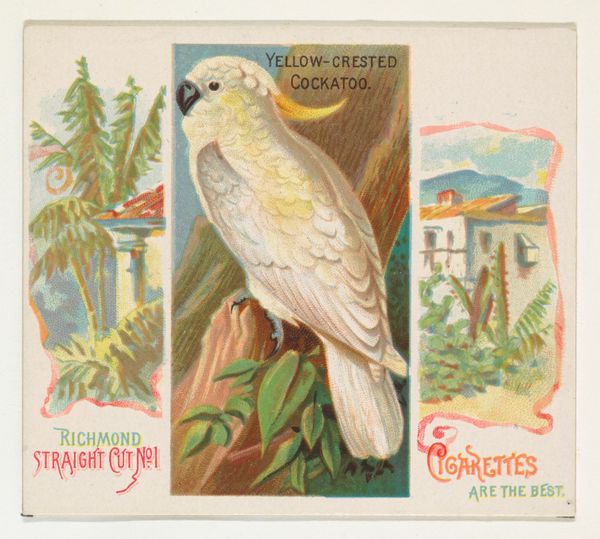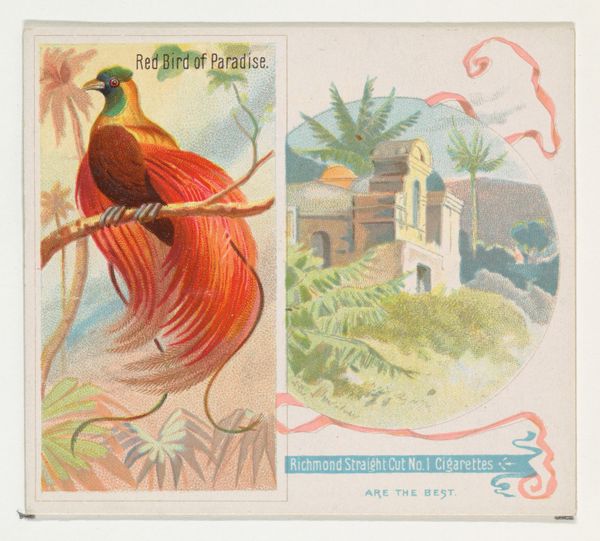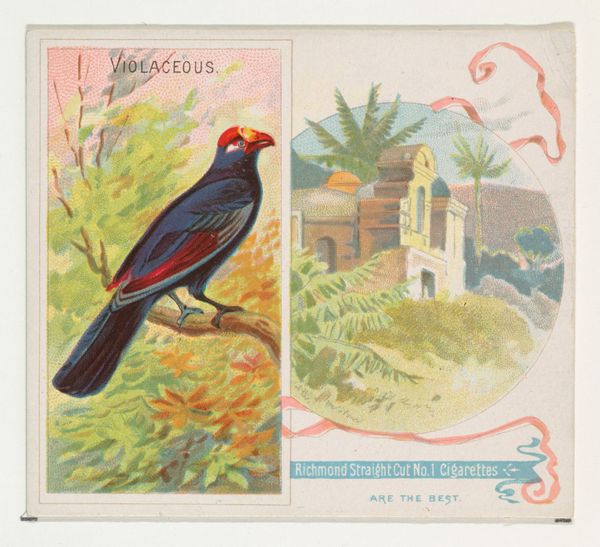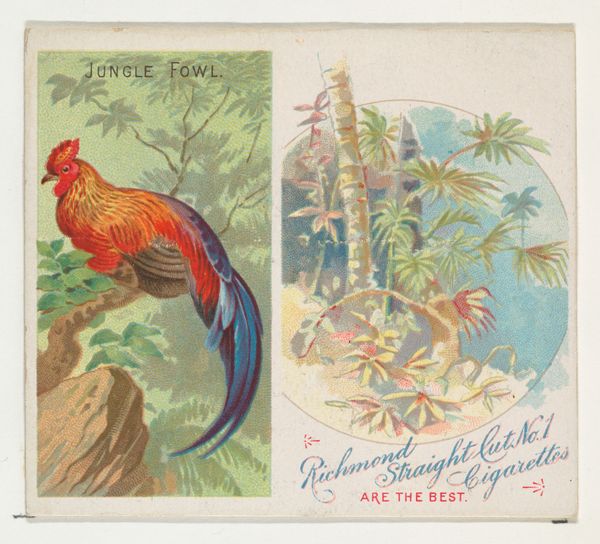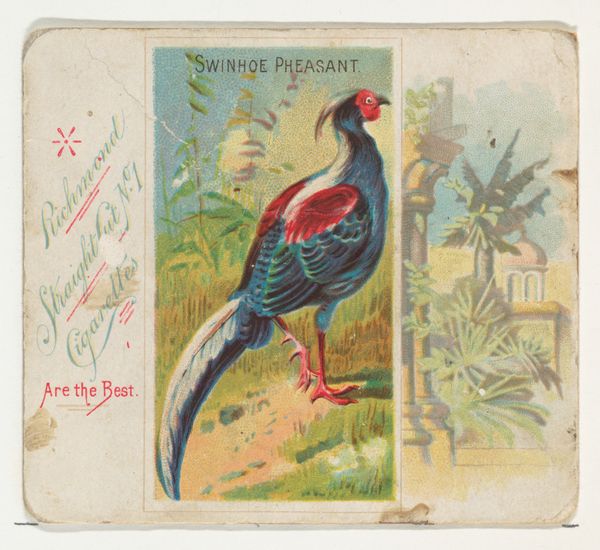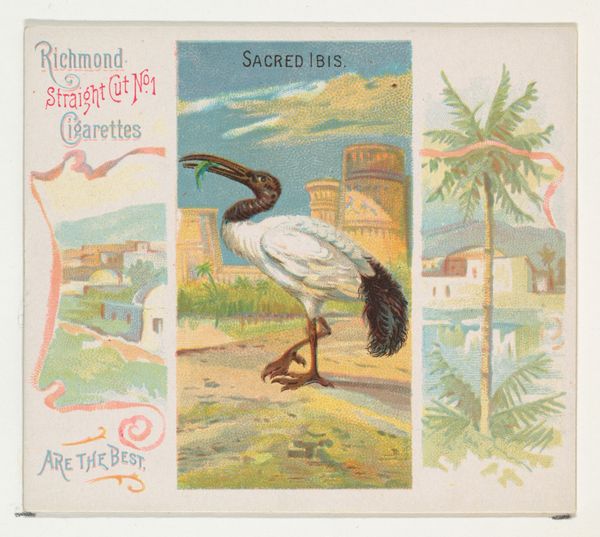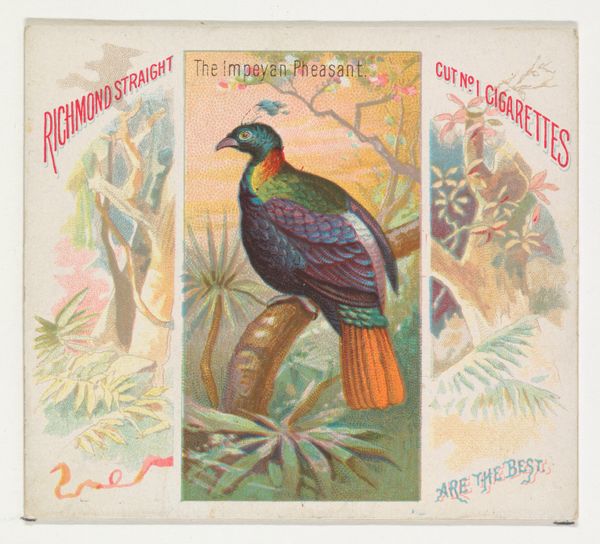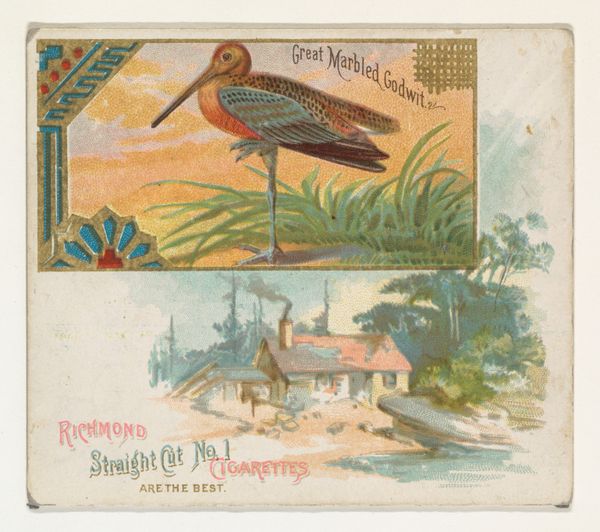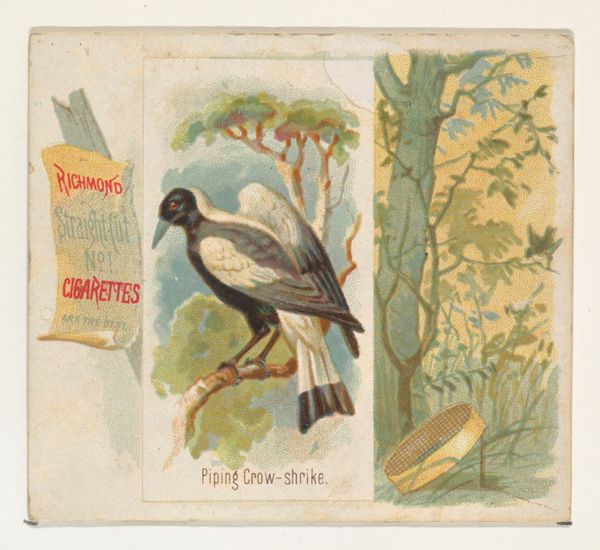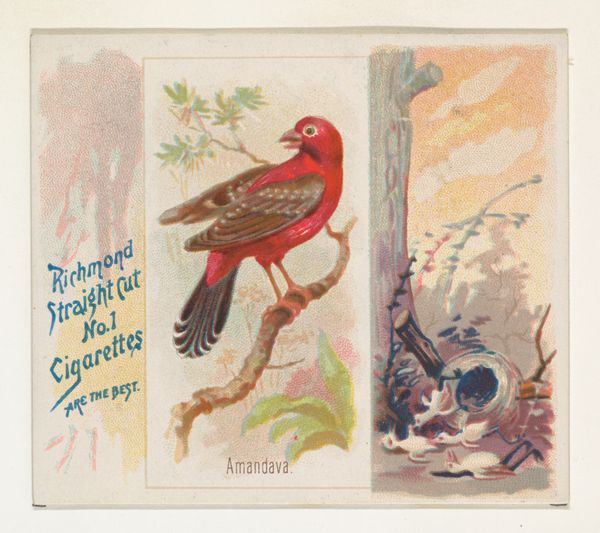
Top Knot Pigeon, from Birds of the Tropics series (N38) for Allen & Ginter Cigarettes 1889
0:00
0:00
drawing, print
#
drawing
#
aged paper
#
water colours
#
pastel soft colours
#
egg art
# print
#
handmade artwork painting
#
coloured pencil
#
watercolour bleed
#
watercolour illustration
#
woody background
#
watercolor
Dimensions: Sheet: 2 7/8 x 3 1/4 in. (7.3 x 8.3 cm)
Copyright: Public Domain
Curator: Here we have "Top Knot Pigeon," created around 1889. It's from the "Birds of the Tropics" series, a collectible card produced by Allen & Ginter for their cigarettes. What's your initial reaction? Editor: The soft, almost pastel colours create a nostalgic and idealized feel. The composition is strikingly symmetrical, and the scale is quite intimate; it feels precious. But why a pigeon associated with luxury? Curator: That tension is central to understanding it. Consider the context: late 19th-century America. Cigarette cards functioned as both advertising and collectable art, traded amongst predominantly white men. The exotic bird, like the "tropics" themselves, are constructed and consumed through a colonial lens. Editor: The pigeon is indeed symbolic. In many cultures, pigeons signify peace and domesticity. Yet, here, the unusual top knot and the surrounding tropical imagery connote exoticism. It seems like a collision of familiar and foreign symbols. Is it an attempt to imbue the everyday act of smoking with a sense of adventure? Curator: Precisely. The card appropriates images and knowledge to reinforce notions of imperial power and masculine identity. The cigarette brand’s claim – "Richmond Straight Cut No. 1 Cigarettes are the Best"—further exemplifies this self-assured dominance, equating the product with superior taste and global exploration. Editor: There is a cultural amnesia inherent to this type of image. The bright colours distract us from the violent extraction of resources required to create these global supply chains and the real impact this had on real lives. Curator: Absolutely, the print naturalizes a world of racial capitalism, embedding itself in the visual culture of its time and our memory of it. Editor: Reflecting on the layered symbols and cultural framing of this unassuming card prompts us to question what these types of nostalgic artifacts choose to represent and what historical and social truths remain obscured? Curator: Ultimately, it challenges us to recognize and question the embedded values within popular visual culture—then and now.
Comments
No comments
Be the first to comment and join the conversation on the ultimate creative platform.
